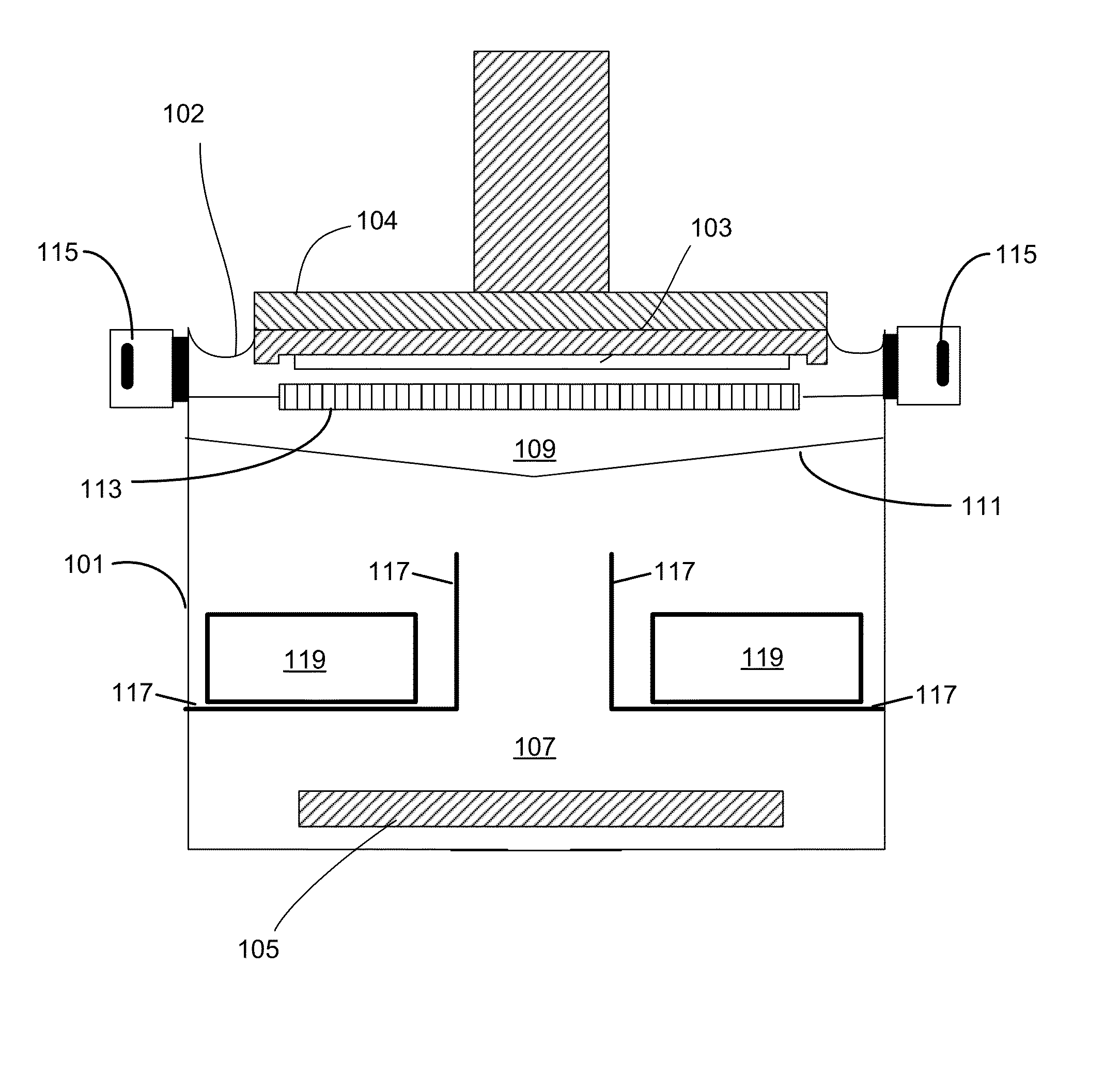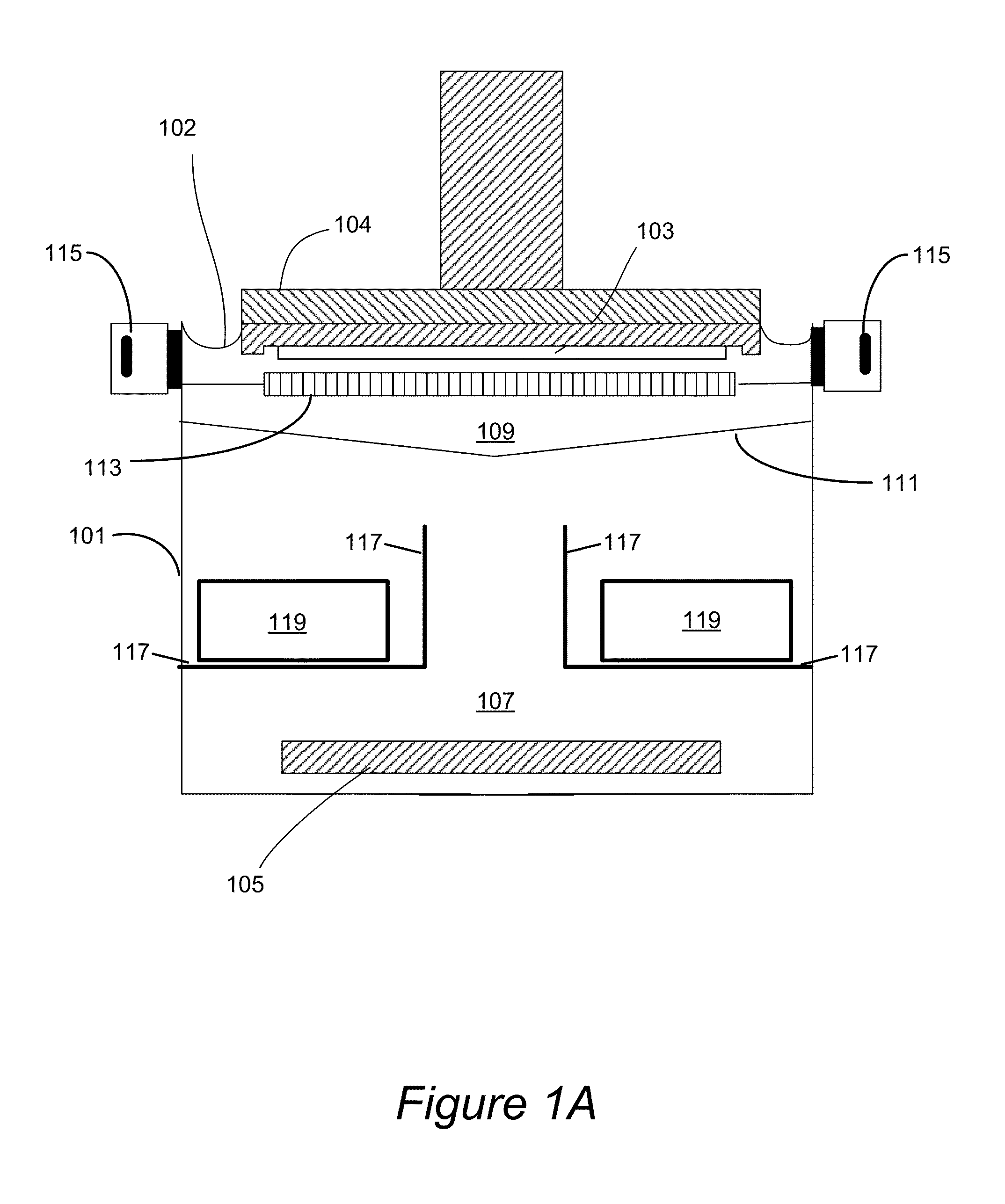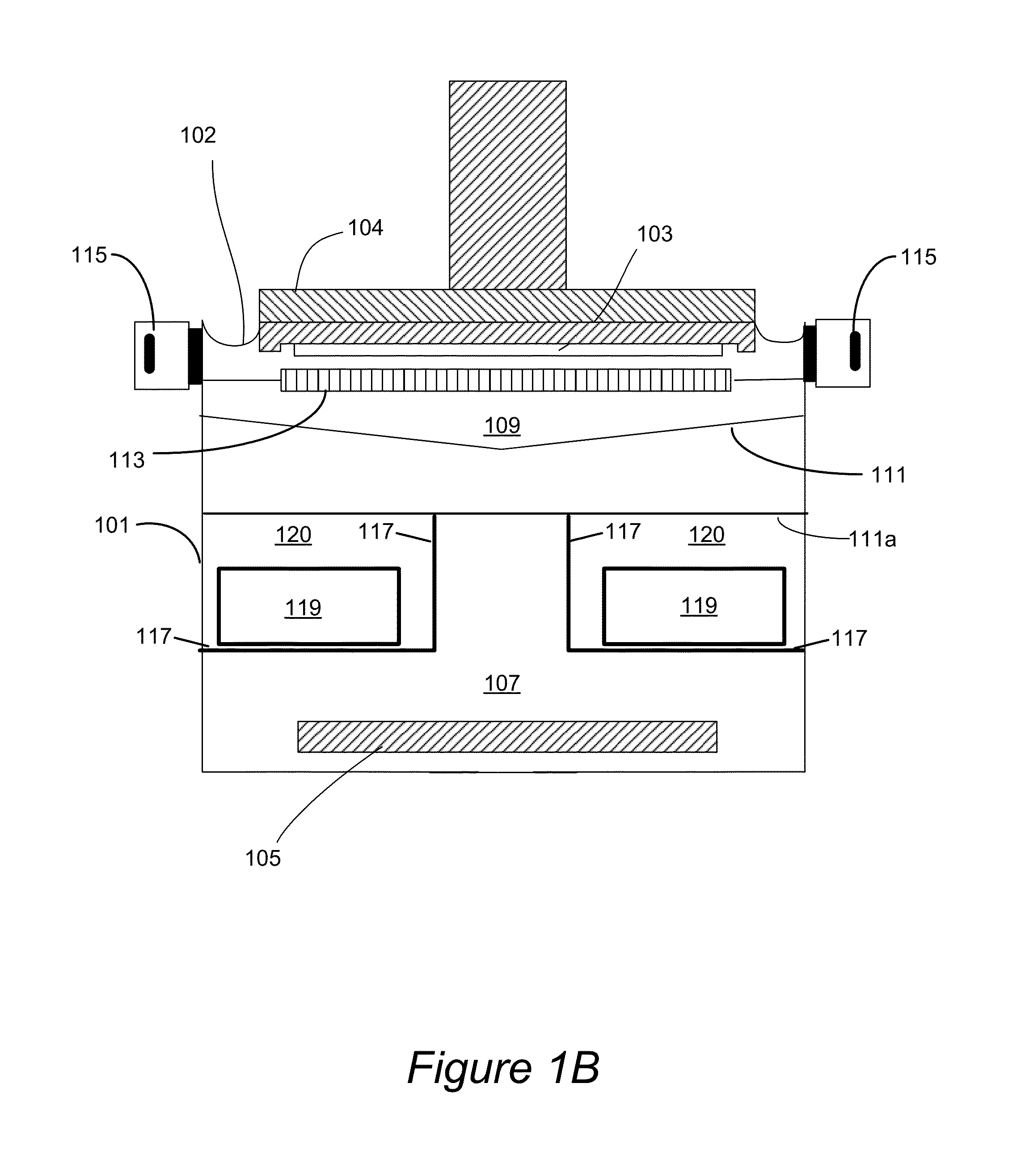Method and apparatus for dynamic current distribution control during electroplating
a dynamic current and electroplating technology, applied in the direction of manufacturing tools, electric circuits, electric circuits, etc., can solve the problems of increasing the difficulty of controlling the terminal effect, increasing the difficulty of achieving uniform initial plating across the wafer, and increasing the difficulty of achieving uniform initial plating.
- Summary
- Abstract
- Description
- Claims
- Application Information
AI Technical Summary
Benefits of technology
Problems solved by technology
Method used
Image
Examples
Embodiment Construction
[0027]The methods and apparatus provided herein are useful for electroplating a variety of metals including but not limited to copper and its alloys on semiconductor substrates having one or more recessed features (e.g., trenches and vias). The methods and apparatus are useful for electroplating on 300 mm and, particularly, on 450 mm semiconductor wafers and on resistive seed layers. For example, the apparatus and methods, can be used, in some embodiments, for electroplating on seed layers having seed sheet resistance of up to about 50 Ohm / sq. (inclusive of this number), e.g. with sheet resistance of between about 10-50 Ohm / sq., such as between about 20-40 Ohm / sq. Examples of substrates that can be processed by provided methods include, without limitation, a 300 mm wafer having a copper seed layer having a thickness of between about 10-2000 Å, or a 450 mm wafer having a copper seed layer having a thickness of between about 20-2000 Å. In some embodiments the initial copper seed layer...
PUM
| Property | Measurement | Unit |
|---|---|---|
| Fraction | aaaaa | aaaaa |
| Thickness | aaaaa | aaaaa |
| Fraction | aaaaa | aaaaa |
Abstract
Description
Claims
Application Information
 Login to View More
Login to View More - R&D
- Intellectual Property
- Life Sciences
- Materials
- Tech Scout
- Unparalleled Data Quality
- Higher Quality Content
- 60% Fewer Hallucinations
Browse by: Latest US Patents, China's latest patents, Technical Efficacy Thesaurus, Application Domain, Technology Topic, Popular Technical Reports.
© 2025 PatSnap. All rights reserved.Legal|Privacy policy|Modern Slavery Act Transparency Statement|Sitemap|About US| Contact US: help@patsnap.com



